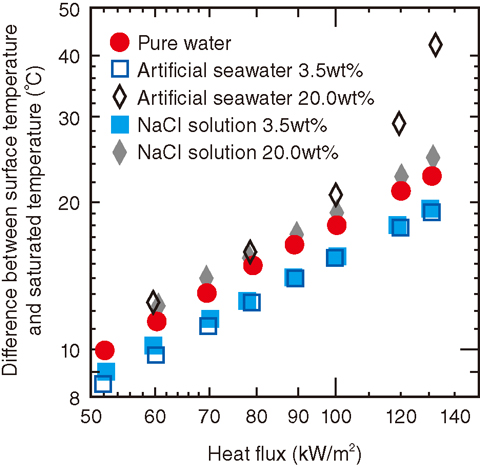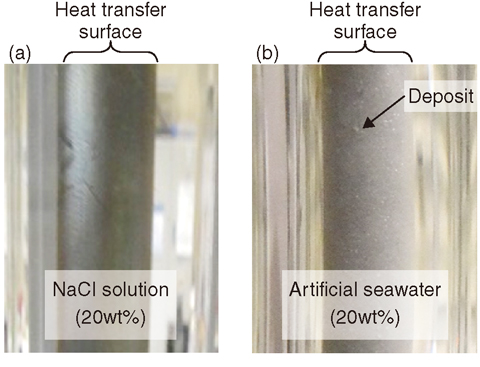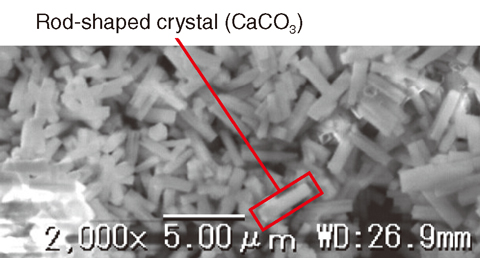
Fig.1-32 Heat transfer characteristics of saturated boiling

Fig.1-33 Photographs of the heat transfer surface after experiments

Fig.1-34 SEM images of the deposited crystals
In the accident at the TEPCO’s Fukushima Daiichi NPS, seawater was injected into reactor cores instead of pure water because core cooling systems were lost in a station blackout. However, the physical properties of seawater are different from those of pure water. Moreover, minerals are included in seawater. These minerals may influence the cooling performance because these deposits may change the heat transfer surface and block the flow.
We conducted an experiment with an internally heated annulus modeled on a fuel rod to estimate the effects of seawater on the cooling performance. The working fluid was artificial seawater modeled on real seawater. In addition, we used pure water and sodium chloride (NaCl) solution as comparison fluids. The concentration ranged from 3.5wt%, like the seawater around Japan, to 20wt%, like the seawater concentration in a core.
Fig.1-32 shows a double-logarithmic graph of the difference between the temperature on the heat transfer surface and the saturated temperature as a function of the heat flux (heating power per unit area). In the pure water, the artificial seawater of 3.5wt%, and the NaCl solutions of 3.5wt% and 20wt%, these temperature differences are proportional to the power of the heat flux. However, in the artificial seawater of 20wt%, the surface temperature increases more than linearly predicted from the condition of higher heat flux. This result indicates deterioration in the cooling performance. One of the causes is crystal deposition on the heat transfer surface. Fig.1-33 shows photographs of the heat transfer surface after the experiments in the artificial seawater and the NaCl solution of 20wt%. Although the surface condition in the NaCl solution has not changed from its condition before the experiment, white crystals have covered the surface in the artificial seawater. The deposition is observed in only the artificial seawater of 20wt%. Fig.1-34 shows scanning electron microscopy (SEM) images of the crystals. Many rod-shaped crystals with sizes of 3-4 μm are observed. By quantitative analysis with X-ray diffraction (XRD), the crystal was found to be calcium carbonate (CaCO3). Therefore, it has been confirmed that the cooling performance deteriorated when the CaCO3 crystals covered the heat transfer surface. In future, these results will be reflected in numerical simulations to grasp the condition of the reactor core.
This topic includes a part of the results of “Establishment of basic technology for decommissioning and safety of nuclear reactors for power generation” in FY 2013 that was entrusted to IRID from METI and of the subsidy program “Project of Decommissioning and Contaminated Water Management” in the FY 2013 supplementary budget and conducted by JAEA as a member of IRID.